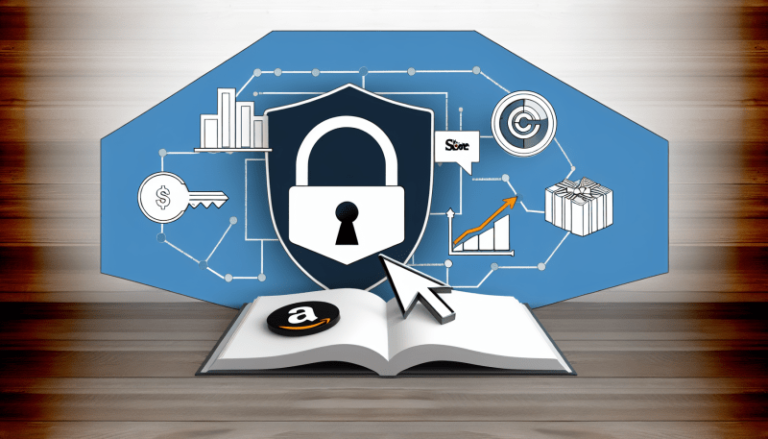In today’s rapidly evolving digital landscape, businesses are continuously striving to optimize their marketing strategies, enhance customer relationships, and increase their revenue streams. One essential tool that has emerged in the realm of marketing automation is Pardot, a powerful platform offered by Salesforce specifically designed for B2B marketing automation. However, to fully leverage the capabilities of Pardot and maximize its potential, businesses often require specialized expertise—hence the increasing demand for Pardot developers. This comprehensive guide delves into the significance of hiring a Pardot developer and outlines how they can help businesses achieve their marketing goals, along with actionable tips for finding and working with the right professional.
Understanding Pardot: The Backbone of B2B Marketing Automation
Before delving into the reasons why every business needs a Pardot developer, it’s crucial to understand what Pardot is, its core functionalities, and the benefits it offers to businesses. Pardot is a robust marketing automation platform designed primarily for B2B organizations, providing a suite of tools to help marketing and sales teams collaborate effectively and drive meaningful engagement with prospects. Some key features of Pardot include:
- Lead Generation and Management: Pardot allows businesses to capture leads through forms, landing pages, and social media integrations, making it easier to build a robust database of potential customers. Once leads are captured, Pardot offers tools for lead scoring and nurturing, helping marketers identify the most qualified prospects.
- Automated Marketing Campaigns: With Pardot, businesses can automate their marketing campaigns, allowing them to send targeted emails, nurture leads, and engage with customers across various channels without manual intervention. This automation not only saves time but also ensures that the right message reaches the right audience at the right time.
- Comprehensive Analytics and Reporting: Pardot provides in-depth analytics and reporting features that enable businesses to track campaign performance, analyze customer behavior, and make data-driven decisions. By understanding how customers interact with marketing materials, businesses can refine their strategies and optimize their ROI.
- Seamless Integration with Salesforce: One of the standout features of Pardot is its seamless integration with Salesforce, a leading CRM platform. This integration allows marketing and sales teams to share data, streamline communication, and create a unified customer experience.
While Pardot offers numerous built-in features, many businesses struggle to utilize its full potential without a dedicated expert to guide them. This is where the expertise of a Pardot developer becomes invaluable.
The Role of a Pardot Developer
A Pardot developer is a specialized professional who possesses in-depth knowledge of the Pardot platform and marketing automation strategies. Their primary role is to help businesses configure, customize, and optimize Pardot to align with their unique marketing objectives. Here are several key responsibilities of a Pardot developer:
1. Configuration and Customization
One of the most critical roles of a Pardot developer is to configure and customize the platform to meet specific business needs. This involves:
- Setting Up Campaigns: A developer can efficiently set up marketing campaigns, ensuring they align with the business’s objectives and target audience. This includes defining campaign goals, creating targeted audience segments, and developing appropriate messaging.
- Customizing Fields and Templates: Pardot offers various default fields and templates; however, a developer can create custom fields and email templates tailored to the brand’s identity and messaging. This customization ensures that marketing materials resonate with the target audience and reflect the company’s unique value proposition.
- Creating Landing Pages and Forms: Developers can design and implement landing pages and forms that capture lead information effectively. By optimizing these elements for conversions, businesses can significantly increase their lead generation efforts.
2. Advanced Analytics and Reporting
Another significant advantage of hiring a Pardot developer is their ability to analyze data and generate meaningful insights. Effective marketing strategies rely on data-driven decisions, and a Pardot developer can:
- Monitor Campaign Performance: Track metrics such as open rates, click-through rates, and conversion rates to assess the effectiveness of marketing campaigns. A Pardot developer can set up dashboards that provide real-time insights into campaign performance, allowing businesses to make quick adjustments as needed.
- Utilize Advanced Reporting Features: Generate detailed reports to provide insights into customer behavior and campaign performance. These reports can help businesses identify trends, measure the effectiveness of different marketing channels, and optimize their strategies accordingly.
- Refine Strategies Based on Insights: Use data analysis to optimize future campaigns and improve ROI. By understanding which campaigns yield the best results, businesses can allocate resources more effectively and focus on high-performing initiatives.
According to a study by the Aberdeen Group, businesses that implement effective marketing automation strategies see a 14.5% increase in sales productivity and a 12.2% reduction in marketing overhead costs.
3. Enhanced Lead Management
Lead management is critical for B2B businesses, and a Pardot developer can significantly enhance this process by:
- Creating Lead Scoring Models: A developer can implement lead scoring systems to prioritize leads based on their interactions and engagement levels. This scoring helps sales teams focus their efforts on the most promising prospects, ultimately increasing conversion rates.
- Automating Lead Nurturing: They can set up automated workflows to nurture leads through personalized content and communication, guiding them through the sales funnel. This nurturing process ensures that potential customers receive relevant information at every stage of their buyer journey.
- Integrating with CRM Systems: A Pardot developer can ensure seamless integration with Salesforce or other CRM systems, allowing for better lead tracking and management. This integration facilitates the sharing of information between marketing and sales teams, enabling them to work collaboratively toward common goals.
A report by the Content Marketing Institute indicates that companies that excel at lead nurturing generate 50% more sales-ready leads at a 33% lower cost. This highlights the importance of effective lead management and the role a Pardot developer plays in achieving it.
4. Custom API Integrations
Many businesses use multiple platforms to manage different aspects of their operations. A Pardot developer can create custom API integrations that connect Pardot with other systems, allowing for:
- Unified Data Management: Ensuring all data is synchronized across platforms for a comprehensive view of customer interactions. This unified approach helps businesses maintain accurate and up-to-date records of customer information.
- Streamlined Processes: Reducing manual data entry and the potential for errors by automating data transfer between systems. Automation not only saves time but also enhances data accuracy, which is crucial for effective decision-making.
- Improved Customer Insights: Gaining better insights into customer behavior by integrating data from various touchpoints. This holistic view allows businesses to create more targeted marketing campaigns and deliver personalized experiences.
5. Keeping Up with Best Practices and Trends
The digital marketing landscape is constantly evolving, with new trends and best practices emerging regularly. A dedicated Pardot developer can help businesses stay ahead by:
- Implementing Industry Best Practices: Keeping up with the latest strategies and tactics for maximizing the effectiveness of Pardot. This includes staying informed about updates to the platform and adapting strategies accordingly.
- Adapting to Changes: Quickly adjusting campaigns and strategies in response to market changes or updates to the Pardot platform. A proactive approach helps businesses remain competitive in a fast-paced environment.
- Providing Ongoing Support and Maintenance: Ensuring that Pardot configurations are up-to-date and functioning optimally. Ongoing support is essential for addressing any technical issues that may arise and ensuring the platform continues to meet business needs.
According to a survey by Marketo, companies that adopt best practices in marketing automation experience a 451% increase in qualified leads. This underscores the importance of staying informed and implementing best practices to achieve marketing success.
6. Improving Customer Engagement
Customer engagement is essential for building long-lasting relationships and driving sales. A Pardot developer can enhance customer engagement by:
- Creating Personalized Experiences: Utilizing Pardot’s features to deliver personalized content based on user behavior and preferences. Personalized marketing messages are more likely to resonate with customers and drive higher engagement rates.
- Automating Follow-Ups: Setting up automated follow-up emails and messages to keep leads engaged and informed. Timely follow-ups can significantly improve the chances of converting leads into customers.
- Enhancing Communication Channels: Utilizing various communication channels, such as email, social media, and landing pages, to interact with customers effectively. A multi-channel approach ensures that businesses can reach customers where they are most active.
A study by Adobe found that businesses that prioritize customer experience outperform their competitors by 80%. This highlights the value of having a Pardot developer who can enhance customer engagement through targeted marketing efforts.
The Business Case for Hiring a Pardot Developer
While it’s evident that hiring a Pardot developer can significantly benefit businesses, it’s essential to understand the broader business case for investing in this expertise. Here are several key reasons why every business should consider hiring a Pardot developer:
1. Increased Efficiency
One of the primary advantages of hiring a Pardot developer is the increase in operational efficiency. By leveraging their expertise, businesses can streamline their marketing processes, reduce manual tasks, and focus on high-value activities. This efficiency translates to faster campaign deployment, improved response times, and ultimately, higher productivity across the marketing and sales teams.
2. Improved ROI
Investing in a Pardot developer can lead to a significant return on investment (ROI) for businesses. By optimizing marketing campaigns, improving lead management, and enhancing customer engagement, businesses can drive higher conversion rates and increase revenue. A well-executed marketing automation strategy can deliver a strong ROI, making the investment in a Pardot developer a worthwhile decision.
3. Enhanced Data Utilization
In today’s data-driven world, the ability to harness and analyze data is crucial for success. A Pardot developer can help businesses effectively utilize their data to make informed decisions, refine marketing strategies, and improve overall performance. By leveraging advanced analytics and reporting features, businesses can gain valuable insights into customer behavior and preferences.
4. Competitive Advantage
In a crowded marketplace, standing out from the competition is essential. By hiring a Pardot developer, businesses can implement cutting-edge marketing automation strategies that set them apart from competitors. This competitive advantage can lead to increased brand recognition, customer loyalty, and market share.
5. Scalability and Flexibility
As businesses grow, their marketing needs evolve. A Pardot developer can help businesses build scalable marketing strategies that can adapt to changing requirements. Whether it’s expanding into new markets, launching new products, or adjusting to industry trends, a Pardot developer ensures that marketing automation efforts remain aligned with business goals.
6. Access to Specialized Knowledge
Pardot is a complex platform with numerous features and functionalities. By hiring a Pardot developer, businesses gain access to specialized knowledge and expertise that can drive effective marketing strategies. This knowledge is invaluable for navigating the intricacies of Pardot and maximizing its potential.
Finding the Right Pardot Developer
Now that we’ve established the importance of hire Pardot developer, let’s discuss how businesses can find the right professional to meet their needs. Here are several steps to consider when searching for a Pardot developer:
1. Define Your Requirements
Before starting the search, businesses should clearly define their requirements and objectives. This includes identifying specific tasks that need to be accomplished, such as campaign setup, lead management, or custom integrations. Having a clear understanding of the desired outcomes will help narrow down potential candidates.
2. Look for Relevant Experience
When evaluating potential Pardot developers, businesses should prioritize candidates with relevant experience in marketing automation and a proven track record of success. This can include certifications, project portfolios, and client testimonials that demonstrate their expertise in Pardot and marketing strategies.
3. Assess Technical Skills
A Pardot developer should possess strong technical skills, including proficiency in Pardot, Salesforce, and web development. Assessing their technical abilities through coding tests or practical assessments can help ensure they have the necessary skills to meet business needs.
4. Evaluate Soft Skills
In addition to technical expertise, soft skills such as communication, collaboration, and problem-solving are crucial for a successful working relationship. A Pardot developer should be able to effectively communicate ideas, collaborate with marketing and sales teams, and address challenges as they arise.
5. Consider Cultural Fit
Hiring a Pardot developer who aligns with the company’s culture and values is essential for fostering a positive working relationship. During the interview process, businesses should assess how well candidates fit into the company culture and their ability to work effectively with existing teams.
6. Review Contracts and Agreements
Before finalizing the hire, businesses should carefully review contracts and agreements to ensure that all expectations, responsibilities, and deliverables are clearly defined. This helps prevent misunderstandings and establishes a foundation for a successful partnership.
Collaborating with Your Pardot Developer
Once a business has hired a Pardot developer, effective collaboration is key to achieving marketing objectives. Here are several tips for working successfully with a Pardot developer:
1. Establish Clear Goals and Objectives
From the outset, businesses should work with their Pardot developer to establish clear goals and objectives for marketing automation efforts. This alignment ensures that both parties are working toward the same outcomes and provides a framework for measuring success.
2. Foster Open Communication
Encouraging open communication between marketing, sales, and the Pardot developer is essential for effective collaboration. Regular check-ins, updates, and feedback sessions can help keep everyone informed and aligned on project progress.
3. Provide Access to Necessary Resources
To enable the Pardot developer to perform their job effectively, businesses should provide access to necessary resources, including existing marketing materials, data, and tools. This access facilitates a smoother workflow and ensures that the developer has the information needed to optimize Pardot.
4. Encourage Innovation and Experimentation
A successful Pardot developer should be encouraged to innovate and experiment with new strategies and techniques. This willingness to explore new ideas can lead to enhanced marketing effectiveness and improved customer engagement.
5. Monitor Progress and Results
Regularly monitoring progress and results is crucial for assessing the effectiveness of marketing automation efforts. Businesses should work with their Pardot developer to establish key performance indicators (KPIs) and track results to ensure that marketing objectives are being met.
Conclusion
In the dynamic world of B2B marketing, hiring a Pardot developer is not just a luxury; it’s a necessity for businesses looking to stay competitive and achieve their marketing goals. By leveraging the expertise of a Pardot developer, businesses can unlock the full potential of the Pardot platform, streamline their marketing efforts, and enhance customer engagement.
From optimizing lead management to implementing advanced analytics and reporting, a Pardot developer plays a crucial role in driving successful marketing automation strategies. As the digital landscape continues to evolve, investing in specialized talent becomes increasingly important for businesses seeking to thrive in the competitive marketplace.
By following the guidelines outlined in this comprehensive guide, businesses can find the right Pardot developer and establish a productive partnership that leads to greater marketing success. In doing so, they position themselves to not only meet their immediate marketing needs but also adapt and grow in an ever-changing digital environment.





























